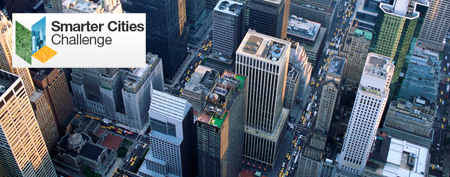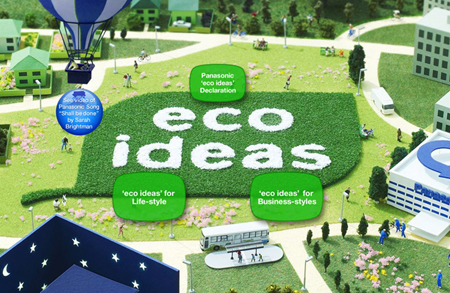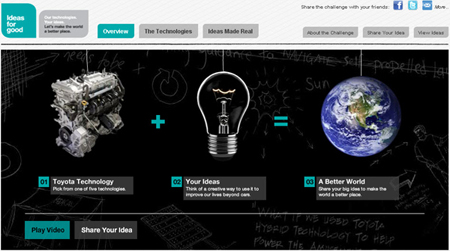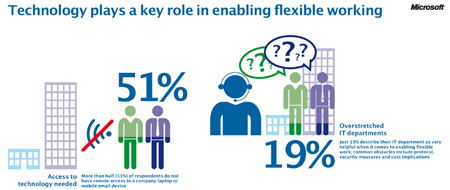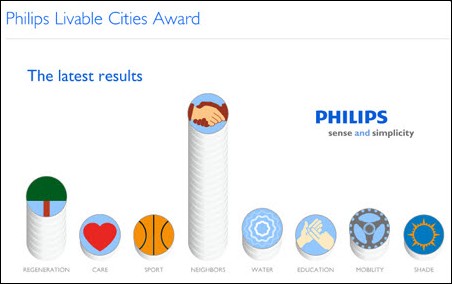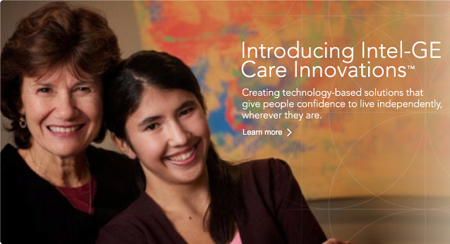What can be better from the tech progress point of view than new ground-breaking technologies and approaches? The ones that can be immediately introduced to a consumer’s life. What’s the shortest way to disuss, shape and start putting these innovations into action? It’s web, of course. To become a leader in business, today manufacturers need to add a new component to the mix of state-of-the-art technology, winning marketing models and advertising, which tugs at people’s heartstrings with emotional ads.
One of their goals now is communicating with Homo consumericus and being his problem-solvers, enhancing customer happiness by bringing innovation to literally every house. In the recent years, global companies have been actively shoring up their environmental and social bona fides to keep up with the growing trend urging them to get eco-oriented, good to communities and social-media savvy. Now, they are not providing a set of some extremely sophisticated tech solutions as they used to—instead, through online platform, they are offering a range of simple and easy-to-follow tech-oriented approaches designed to improve our life.
Of course, being eco-friendly and creating social value, developing sustainable policies and wrapping corporate responsibility into business strategies doesn’t necessarily involve the use of digital platforms, but today this turns to be one of the most effective ways to connect with consumers to inform them about the company’s commitments and help them introduce these innovations in their everyday life. Taking the study by BergHind Joseph as the source of inspiration for this piece, Popsop will present a list of projects by global companies designed for providing people with innovative solutions to address social, economic and environmental issues. With a great deal of projects, oriented at highlighting and supporting sustainable outlook of the brands, we’ll put just seven of them into the spotlight (only as examples, with due respect to the rest). So, let’s start our exploration:
IBM
IBM, which is celebrating its 100th anniversary this year, is one of the brands which introduce innovation into people’s lives with everything it does. IBM’s Smarter Cities Challenge provides one hundred cities across the world with technological solutions aiming at improving their infrastructure and driving positive changes into people’s life in areas as diverse as transportation, energy, clean water, education, social services, public safety and economic development. Here’s how the project is described on the dedicated website: “The Smarter Cities Challenge is a 3-year IBM Corporate Citizenship initiative to enable 100 cities around the world to become smarter by enhancing their capacity to collect, analyze and act upon information across multiple core systems; to apply data-driven system of systems analysis to the key problems facing cities; to create a global network through which cities can measure progress and share best practices; and to foster cross-sector partnerships that address critical challenges, enabling cities around the world to become more vibrant and livable places for all their citizens.” The other initiatives of the corporation include City Forward (a website which helps improve quality of life in a range of cities and become part of the above mentioned project) and Smarter Commerce services for businesses.
Panasonic
Striving to become “the No. 1 Green Innovation Company in the electronics industry” by 2018, its 100th anniversary, Panasonic launched a plethora of initiatives in line with this goal. One of them is the Eco Ideas portal, which provides visitors with a reference to various innovative approaches, realized by the brand, which can make their lives greener. Panasonic is also one of eight companies developing ‘Smart Town’ in Japan, the 1,000 houses area organized with eco-conscious master planning; comprehensive information and energy connection; and with regard to a next-generation lifestyle.
Toyota
Toyota, like any other car brands, which want to dominate in the industry (or at least, continue as one of the leaders), can’t do without innovation. But some solutions it uses for the car development can be applied for driving positive changes in the non-automotive space as well. The automaker launched its ‘Ideas for Good’ initiative, encouraging talents to repurpose five brand’s distinctive technologies to benefit society. In early June, the winners worked side-by-side with experts to design and further develop their projects, which include ‘Power Plant Gym’ (enabling “people working out at their fitness center get reimbursed by their power company for putting electricity back into their local power grid”) and ‘Build a better helmet’ (using “T.H.U.M.S. to demonstrate the strengths and weaknesses of current bicycle helmet technology”). To know more about the brand’s drive to innovation, visit the dedicated section on its website, where the automaker unveils its vision (in particular, in auto industry). ”Through improvements of conventional technology, as well as pioneering efforts in the application of new technologies, Toyota is taking great steps to develop eco-cars which will help us become a low carbon society,” it says.
Microsoft
Being a digital and software world leader, Microsoft introduces solutions which help improve user’s lives primarily in this aspect. Recently, the brand unveiled a study reveling today’s attitudes towards flexible working (from home or any other place employees find most comfortable for them), and it also creates opportunities for this kind of employment. For instance, Microsoft Innovation Center (Productivity Center) “aims help businesses increase productivity of their workers, from the efficient use and application of good practice in working with technology iProductivity. Technologies such as collaborative workspaces, instant messaging, mobility solutions or the information search tools have been shown to impact the bottom line of companies and their ability to innovate and become more competitive.” Microsoft also launched Imagine Cup, the world’s premier student technology competition, encouraging younger tech talents to come up with ideas to solve the world’s toughest problems.
Philips
The same idea—providing people with technology, which can change the ways people are engaged in work—rested behind the Workplace Innovation Program (WPI), started in 2007. Here’s how the company described it, “Within this initiative lies the intent to create new shared global workplace solutions, as well as setting new standards and planning principles for Philips real estate, driving efficiency through the organisation by better space utilisation and effective working practices.” It finished in 2010, and the same year the brand launched another initiative called Philips Livable City Award, which was aiming at improving the life of city-dwellers across the globe (people presented their projects, which were then funded by the brand), just like IBM with its Cities.
Sony
As part of its initiative ‘Open Planet Ideas’ launched together with WWF, Sony hasn’t been offering public any ready-to-go solutions, but it helped with the realization of the most interesting one, the winning entry Greenbook, “an online magazine for green-minded community: a magazine that the reader is the Hero.” The project was selected from almost 400 ideas, which were designed to help tackle environmental problems in their own way. The Open Planet Ideas was recognized as one of the winners at Guardian’s Sustainable Business Awards 2011, leaving O2 Eco Rating and Recyclebank’s Waste Not, Want Not behind it.
GE
General Electric is one of the recognized leaders in the technology world, dedicated to building its solutions on innovation basis where it’s possible. Together with Intel, it launched Care Innovations, “a company focused on transforming health care models to improve the quality of care and empower individuals and institutions with new technologies.” The official website of the joint company features information on the new products, which address the problems old and disabled people have to face when they try to live independently. The products include both appliances and digital solutions that help take up the challenges.
Just every company with the ‘Innovation’ section on its website, has something to add to this piece. Today, visionary companies are trying to go beyond simple delivering new products—through online platforms, they are giving people a chance to make something that would help consumers evolve into action takers who want to drive innovation into their lives and don’t hesitate to do it.
